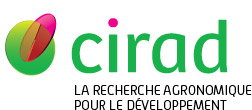Ramírez-Valiente José A., Poyatos Rafael, Blackman Chris J., Cabon Antoine, Castells Eva, Cochard Hervé, Creek Danielle, Delzon Sylvain, García-Valdés Raúl, Limousin Jean-Marc, López Rosana, Martin-StPaul Nicolas K., Moreno Myriam, Rowland Lucy, Santiago Louis S., Schuldt Bernhard, Torres-Ruiz José M., Valade Aude, Martínez-Vilalta Jordi, Mencuccini Maurizio. 2025. Limited plastic responses in safety traits support greater hydraulic risk under drier conditions. Nature Ecology and Evolution, 12 p.
|
Version Online first
- Anglais
Accès réservé aux personnels Cirad Utilisation soumise à autorisation de l'auteur ou du Cirad. s41559-025-02830-4.pdf Télécharger (3MB) | Demander une copie |
Url - jeu de données - Entrepôt autre : https://doi.org/10.5281/zenodo.14582442 / Url - autres données associées : https://github.com/ramirezval/Ramirez-Valiente-etal-2025
Résumé : Understanding how plants adjust their hydraulic system to the environment is essential to predict how these organisms will respond to global change. Here we compiled a dataset and performed meta-analysis on 223 studies on plastic and evolutionary adjustments of hydraulic traits to air temperature, CO2 concentration, irradiance, soil nutrient and water availability. On average, species plastically increased embolism resistance and sapwood area per leaf area under drier conditions, with a decrease in stem-specific hydraulic conductivity and water potential at the turgor loss point, which are consistent with adaptive responses. However, the average increased embolism resistance was not sufficient to compensate the reduction in the minimum water potential, implying a lower safety margin from lethal hydraulic failure under drought. These results point towards a general critical increase in the risk of hydraulic failure in future drier environments. Plastic responses to increased soil nutrient content and irradiance did not always align with those to drought, highlighting the potential for changes in light and nutrient conditions to modify plant hydraulic responses to climate-change-driven droughts.
Mots-clés Agrovoc : résistance à la sécheresse, phénotype, facteur du milieu, plasticité phénotypique, réponse de la plante, changement climatique, embolie, potentiel hydraulique (sol)
Mots-clés libres : Traits, Plasticity, Meta-analysis
Agences de financement européennes : European Commission
Agences de financement hors UE : Ministerio de Economía, Industria y Competitividad, Gobierno de España, Agencia Estatal de Investigación, Ministerio de Ciencia, Innovación y Universidades, Agència de Gestió d'Ajuts Universitaris i de Recerca, Institució Catalana de Recerca i Estudis Avançats
Programme de financement européen : H2020
Projets sur financement : (EU) Improving access to FORest GENetic resources Information and services for end-USers
Auteurs et affiliations
- Ramírez-Valiente José A., CREAF (ESP) - auteur correspondant
- Poyatos Rafael, CREAF (ESP)
- Blackman Chris J., University of Tasmania (AUS)
- Cabon Antoine, WSL (CHE)
- Castells Eva, CREAF (ESP)
- Cochard Hervé, UCA (FRA)
- Creek Danielle, Norwegian University of Life Sciences (NOR)
- Delzon Sylvain, Université de Bordeaux (FRA)
- García-Valdés Raúl, Universidad Rey Juan Carlos (ESP)
- Limousin Jean-Marc, CNRS (FRA)
- López Rosana, UPM (ESP)
- Martin-StPaul Nicolas K., INRAE (FRA)
- Moreno Myriam, INRAE (FRA)
- Rowland Lucy, University of Exeter (GBR)
- Santiago Louis S., UC (USA)
- Schuldt Bernhard, Technische Universität Dresden (DEU)
- Torres-Ruiz José M., IRNAS (ESP)
- Valade Aude, CIRAD-PERSYST-UMR Eco&Sols (FRA)
- Martínez-Vilalta Jordi, CREAF (BFA)
- Mencuccini Maurizio, CREAF (ESP) - auteur correspondant
Source : Cirad-Agritrop (https://agritrop.cirad.fr/614843/)
[ Page générée et mise en cache le 2025-09-30 ]




